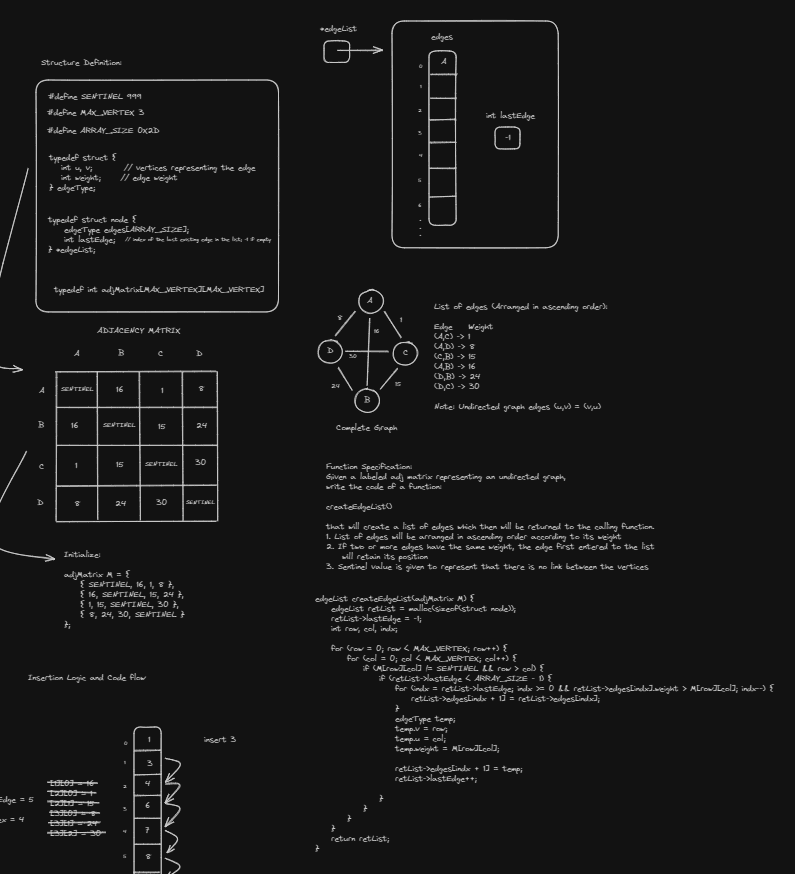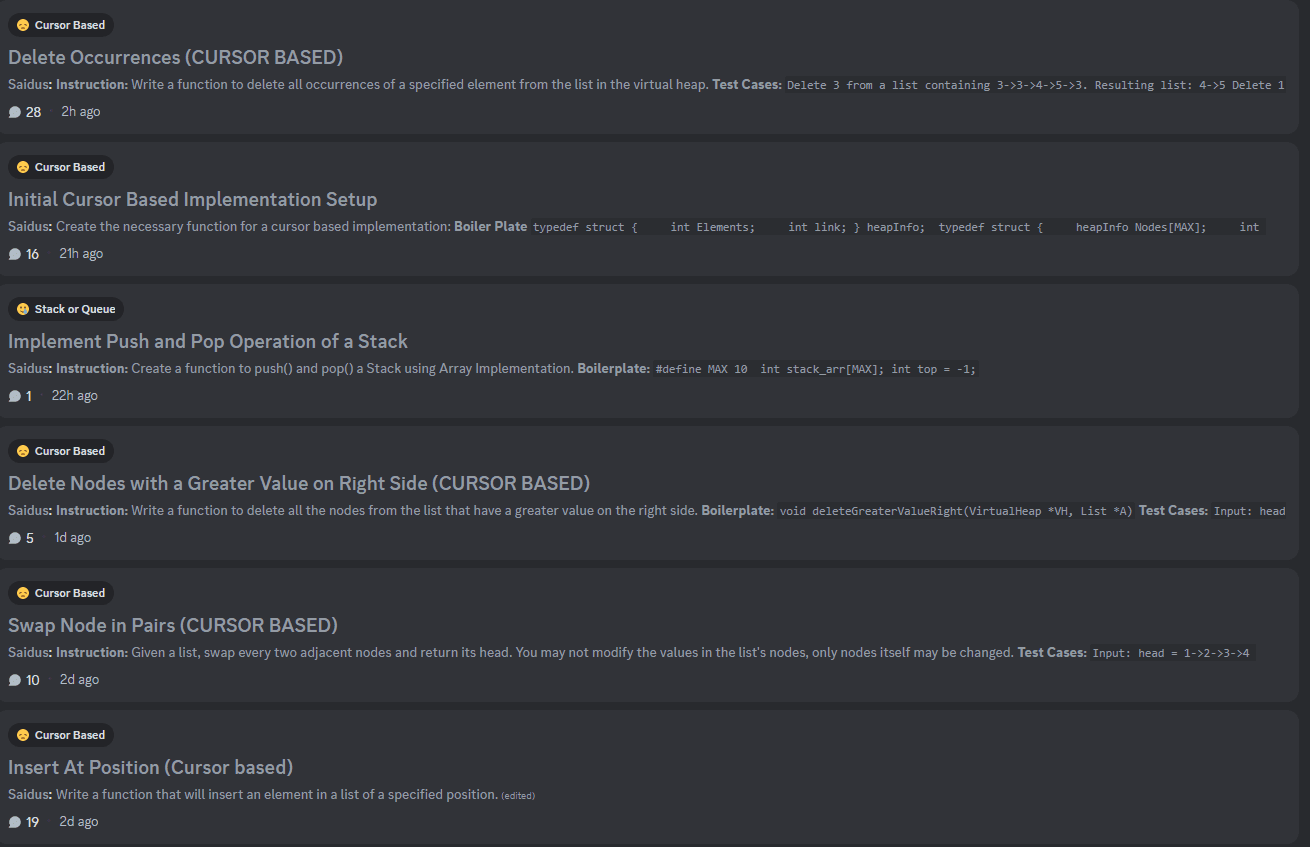How to Ace your Data Structures and Algorithms Course

Jasper Apos
Computer Science

DSA IS HARD
Embarking on the journey of a Data Structures and Algorithms (DSA) class can be both exhilarating and challenging. As a foundational course in computer science, mastering DSA is essential for any aspiring software engineer. In this blog post, we'll explore effective strategies and tips to help you not only survive but thrive in your Data Structures and Algorithms class.
Understand the fundamentals
Having good fundamentals will help a lot before diving into complex topics, ensure you have a solid understanding of the basics. Familiarize yourself with fundamental data structures like arrays, linked lists, stacks, and queues. Comprehend key algorithmic concepts such as searching, sorting, and recursion which which will be used more when you reach trees. A strong grasp of the basics will lay a solid foundation for more advanced topics.
Draw the data structure
Don't just stare at lines of code; take a moment to pick up your pen and draw. Visualize the relationships within the data by creating diagrams that represent the connections between various elements. Whether it's a tree structure or a flowchart, turning abstract ideas into tangible visuals can make the complex seem far more straightforward.

Make visuals a consistent part of your study routine. Regularly draw out concepts, problems, and solutions to reinforce your understanding over time. Consistency is key to turning visuals into a powerful learning habit Incorporating visuals into your learning approach not only simplifies complex concepts but also equips you with a robust foundation for tackling real-world coding challenges. So, pick up that pen, unleash your creativity, and visualize your way to success in your data structures and algorithms class!
There's no harm in seeking help
Dont accumulate things that you dont know, if you encounter challenges or feel stuck on a particular topic, don't hesitate to seek guidance from your instructor, TA, or fellow students. Utilize office hours and ask questions during lectures. Clearing doubts as soon as they arise will prevent them from snowballing into larger obstacles.
Collaborate and discuss
It's more fun engaging with your peers and participate in some group discussions. Explaining your thought process and listening to others can reinforce your understanding of different concepts. Group study sessions or online forums like Stack Overflow and Reddit can be valuable resources for clarifying doubts and gaining new perspectives.

As you collaborate and discuss, be open to feedback. Whether it comes from peers, instructors, or online communities, feedback is a valuable tool for continuous improvement. Embrace constructive criticism, reflect on suggestions, and use them to refine both your coding skills and your understanding of data structures and algorithms.
Incorporating these collaborative strategies into your learning journey transforms the process into a dynamic, collective effort. Engaging with others not only enhances your understanding but also cultivates a supportive network that can guide you through the challenges of your data structures and algorithms class and beyond.
Teach to Learn: Solidifying your knowledge
One of the most effective ways to ensure you've truly mastered a concept is by teaching it to someone else. Organize study sessions where each member takes turns explaining a specific topic or solving a problem. Teaching not only reinforces your understanding but also allows you to identify gaps in your knowledge that may need further exploration.
Chunking for effective study sessions: Break it down yo
Approaching the vast realm of data structures and algorithms demands a thoughtful strategy, and chunking emerges as a cognitive ally in this educational journey. As you embark on the intricate study of data structures and algorithms, chunking becomes a practical framework for breaking down the overwhelming expanse of information. This cognitive technique involves dissecting complex topics into smaller, more manageable sections, allowing you to navigate through the material with precision. Each chunk represents a targeted focus area, enabling a deeper dive into specific concepts without succumbing to information overload. By adopting this deliberate approach, you not only enhance your understanding of individual elements but also fortify your memory retention. In essence, chunking transforms your study sessions into a systematic and effective learning experience, where the comprehensive landscape of data structures and algorithms unfolds in digestible portions.
As you navigate the intricacies of chunking, the benefits extend beyond immediate comprehension. Breaking down extensive information into smaller sections not only aids understanding but also promotes long-term retention. This methodological study approach ensures that each piece of information is not merely learned but ingrained into your knowledge base. In the grand tapestry of data structures and algorithms, each chunk acts as a building block, contributing to the construction of a robust mental framework. By systematically mastering one chunk at a time, you cultivate a solid foundation that forms the basis for a more profound comprehension of the subject matter. In essence, chunking transforms the challenge of studying data structures and algorithms into a structured, manageable, and ultimately rewarding educational expedition.
Practice Regularly
Consistent and intentional practice stands as the bedrock of success when navigating the intricate landscape of data structures and algorithms. Rather than treating these subjects as periodic endeavors, incorporating regular practice into your routine is akin to honing a skill. Devote dedicated time to solving problems, implementing algorithms, and coding regularly. This not only reinforces your understanding of the theoretical concepts but also cultivates a hands-on proficiency that is indispensable in the real-world application of data structures and algorithms. Regular practice serves as a dynamic learning tool, allowing you to refine your problem-solving skills, identify patterns, and develop an intuitive grasp of different algorithms, ensuring that you are well-prepared to tackle the diverse challenges these fields present.
In the realm of data structures and algorithms, the saying practice makes perfect holds immense significance. It's not just about the quantity of practice but the consistency that matters. Regular engagement with coding platforms, participation in coding challenges, and working on real-world projects contribute to a continuous refinement of your skills. This habitual practice not only fosters a deeper understanding of the intricacies involved but also instills a level of confidence that is crucial when facing coding interviews or implementing solutions in a professional setting. As you make regular practice an integral part of your learning journey, you not only reinforce your theoretical knowledge but also equip yourself with the practical acumen required to excel in the dynamic and ever-evolving field of data structures and algorithms.